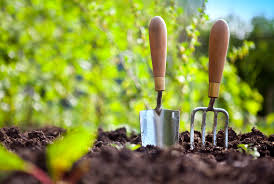1. Use native plants: Native plants are adapted to the local climate and soil conditions, meaning they require less water and maintenance than non-native species.
2. Install a rain barrel: Collecting rainwater from gutters and downspouts can be used to water your garden, reducing your water usage.
3. Composting: Composting yard waste and food scraps turns them into nutrient-rich soil for your garden and reduces landfill waste.
4. Install an efficient irrigation system: Installing a drip irrigation system or soaker hoses can reduce water usage by up to 50%.
5. Use organic pest control: Avoid chemical pesticides and opt for natural methods like companion planting, neem oil, or homemade garlic spray.
6. Mulch: Mulching around plants can help retain moisture, reduce weeds, and improve soil quality.
7. Incorporate recycled materials: Use recycled materials like reclaimed wood, concrete pavers made from recycled materials, and repurposed garden art.
8. Use solar-powered lighting: Solar-powered lighting eliminates the need for electricity and saves energy.
9. Use a push mower: Opt for a push mower over a gas-powered one to reduce emissions and lower your carbon footprint.
10. Install a green roof: Adding a green roof to a shed or garage can reduce runoff, provide insulation, and attract pollinators.




